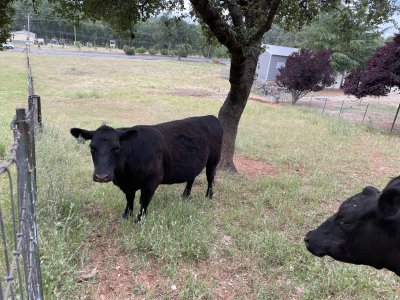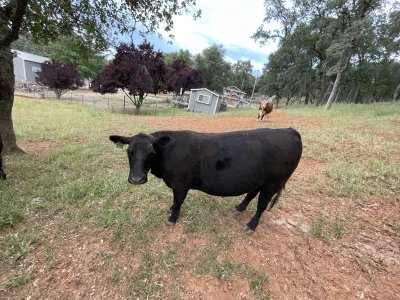They are "in good flesh" as we once said. If they begin to get poochy around the tailhead they are definitely too fat. I'd rather have cows a hundred pounds underweight than a hundred pounds over. They look good.
This!
Being over conditioned is not good for the soon-to-be momma heifer or for the calf growing inside her. I prefer them to be a little thinner in the last couple of months. I call 'em 'thrifty'. Easy doers.
Fat cows (especially heifers) don't:
1. Cycle as good as a 'thrifty' heifer.
2. Dilate as fully and quickly as a 'thrifty' heifer.
3. Push as strongly and easily as a 'thrifty' heifer.
4. Recover from birth as easily and as quickly as a 'thrifty' heifer.
5, Milk and mother as good as a 'thrifty' heifer.
If the heifer is fat, most of the time, the calf will be too.
A decade ago, I let my wife take over one of our beefmaster heifers after the heifer was bred and turned her into a pet of sorts. She was adamant that the heifer needed more than the rest and started feeding her every evening when she was about 4 months along. I tried to tell her, but she insisted on the feed supplement and was heartbroke when I pulled a 99lb dead calf and all the rest calved alone with 70-80 lb calves. I didn't say anything to wife then but a few weeks later we had a sit down talk about what went wrong.
Not much you can do to control weight gain if they are on grass but generally, she won't eat more than she needs, but if you decide to start supplementing her with feed, she'll still graze and you can get them too fat due to increased protein. Even when the grass turns brown, she will be fine most of the time--she'll just eat more of the lesser quality grass. Winter bred cattle and other bovines have made it thru pregnancy's rigors on just spring/summer grass for thousands of years without us interfering.



